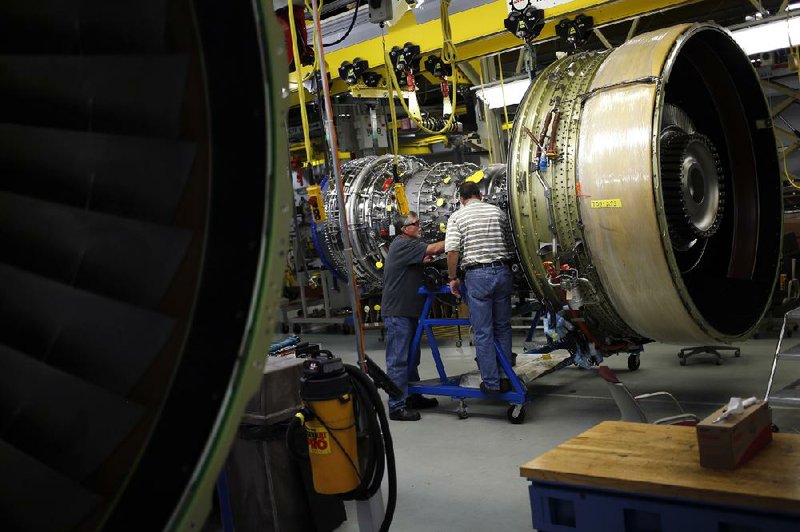WASHINGTON -- U.S. manufacturing grew in June for the 13th straight month, but the pace of the expansion slowed from May.
The Institute for Supply Management said Tuesday that its manufacturing index dipped only to 55.3 in June from 55.4 in May. Any reading higher than 50 signals that manufacturing is growing.
The trade group of purchasing managers said orders rose at a faster pace last month compared with May. But growth in production and exports slowed. A measure of employment shows that factories added jobs for the 12th straight month; the pace of hiring last month was the same as in May.
"It's a good report for the overall economy," said John Silvia, chief economist at Wells Fargo Securities LLC in Charlotte, N.C. "This really does reinforce the view that the ISM manufacturing index is consistent with the continued gains in industrial production."
Fifteen of 18 manufacturing industries grew in June, led by furniture makers and mineral producers. Textile, chemical, and plastics and rubber manufacturing contracted in June.
"It looks to me and feels from the numbers and from the comments from our panel that things are moving forward nicely," Bradley Holcomb, chairman of the institute's survey, said on a conference call with reporters.
Last week, the Commerce Department reported that orders for U.S. durable goods fell 1 percent in May, dragged down by a drop in demand for military equipment. Excluding defense-related goods, orders rose. And in a good sign for future business investment, orders for core capital goods rose 0.7 percent.
Increased spending by businesses would give the economy some momentum after it got off to a bad start this year; the U.S. economy shrank at a 2.9 percent annual rate from January through March. But economists blame the first-quarter drop on an unusually bitter winter and a sharp reduction in businesses' inventories. They expect economic growth to rebound to an annual pace of 3 percent the second half of 2014.
The job market has been steadily improving. Employers added 200,000 jobs in May for the fourth straight month, the longest such stretch since 1999. Factories added 10,000 jobs in May.
In a research note, analysts at Stone McCarthy Research Associates said the survey's employment measure is "consistent with further gains in manufacturing payrolls." They forecast that factories added another 10,000 jobs in June.
The government's employment report for June comes out Thursday.
Economists have been worried about the fallout from slower economic growth in China. But a survey out Tuesday showed that Chinese manufacturing grew in June for the first time in six months, though the expansion was weak. HSBC Corp. said Tuesday that its purchasing managers index for China rose to 50.7 from May's 49.4 on a 100-point scale. Numbers above 50 signal growth.
U.S. construction spending barely increased in May as gains in spending on nonresidential projects, such as office buildings and public construction, were largely offset by a big drop in home building.
Construction spending edged up 0.1 percent in May after a much stronger 0.8 percent April increase, the Commerce Department said Tuesday. The back-to-back gain followed a period of weakness in which spending fell in both January and February and was flat in March.
The construction industry has struggled with an unusually severe winter, which curtailed building activity in many regions.
Construction activity totaled $958.1 billion at a seasonally adjusted annual rate in May, up 6.6 percent from a year ago.
Economists are forecasting that housing and overall construction will regain momentum in coming months, helping with overall economic growth.
However, housing suffered a setback in April, falling 1.5 percent. Single-family home construction was down 1.4 percent while apartment construction dropped 0.6 percent. Overall, housing construction is up 7.5 percent from a year ago.
Nonresidential construction rose 1.1 percent, led by a 4.3 percent rise in construction of power generating facilities. Construction of office buildings was up slightly, but spending on hotels and the category that covers shopping centers both showed declines.
Spending on government projects rose 1 percent, with a 2 percent jump in spending on state and local building projects, offsetting an 8.9 percent decline in spending by the federal government on building projects.
Information for this article was contributed by Paul Wiseman and Martin Crutsinger of The Associated Press and Lorraine Woellert of Bloomberg News.
Business on 07/02/2014
